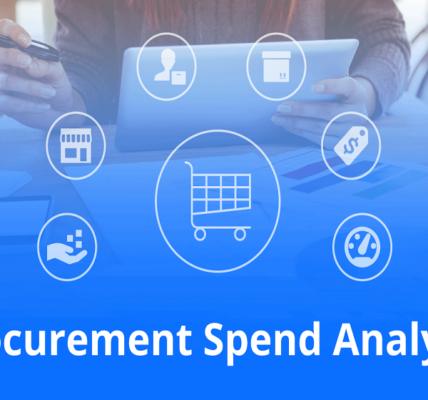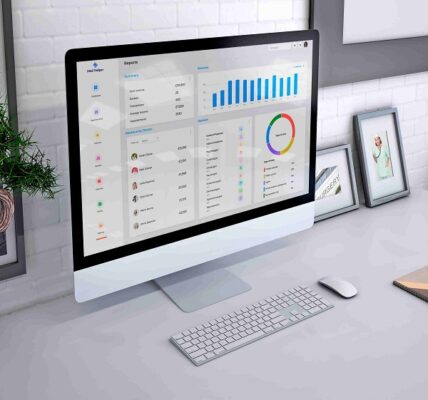Preventive Maintenance and Asset Lifecycle Management: Unleashing the Benefits of Tracking Software
Maintaining and managing equipment is paramount to ensure smooth operations, maximize productivity, and minimize downtime. Effective preventive maintenance and asset lifecycle management strategies are crucial in the construction industry. With technological advancements, the integration of construction equipment tracking software has revolutionized how general contractors handle their assets. This article will explore the benefits of tracking software in preventive maintenance and asset lifecycle management while highlighting its impact on general contractor accounting.
Streamlining Preventive Maintenance
Construction equipment is subjected to rigorous and demanding tasks on a daily basis. The wear and tear on these machines can be substantial, potentially leading to unexpected breakdowns and costly repairs. General contractors can effectively streamline preventive maintenance processes by implementing construction equipment tracking software.
1. Enhanced Equipment Tracking and Scheduling
Tracking software allows contractors to maintain a comprehensive record of their equipment, including maintenance history, usage patterns, and upcoming service requirements. This data empowers contractors to proactively schedule preventive maintenance tasks, ensuring equipment is serviced regularly. By addressing issues before they become major problems, contractors can prevent unexpected breakdowns, minimize repair costs, and extend the lifespan of their assets.
2. Efficient Work Order Management
Tracking software enables creating and managing work orders, providing a centralized platform for assigning and tracking maintenance tasks. This ensures that maintenance requests are promptly addressed and completed within the specified timeframes. With streamlined work order management, contractors can optimize maintenance operations, increase equipment uptime, and minimize operational disruptions.
Optimizing Asset Lifecycle Management
In addition to preventive maintenance, tracking software offers a range of benefits for managing the entire lifecycle of construction assets. Let’s explore some key advantages below.
1. Accurate Asset Inventory and Utilization
Tracking software provides real-time visibility into construction equipment’s location, status, and utilization. By having an accurate inventory and understanding of equipment utilization, contractors can make informed decisions regarding equipment deployment, transfers, and retirements. This level of visibility minimizes the risk of equipment loss or theft and ensures optimal asset utilization across various projects.
2. Improved Equipment Performance and ROI
With detailed data on equipment usage and performance metrics, tracking software enables contractors to identify underperforming assets. By analyzing this information, contractors can optimize equipment usage, identify potential issues early on, and implement corrective actions. This proactive approach improves equipment performance, maximizes return on investment (ROI), and reduces unnecessary expenses associated with inefficient equipment.
Impact on General Contractor Accounting
Construction equipment tracking software also significantly influences general contractor accounting processes. Here are some notable impacts:
1. Accurate Equipment Valuation and Depreciation
Tracking software provides comprehensive data on equipment usage, maintenance, and repair costs, enabling accurate valuation and depreciation calculations. This ensures that equipment is properly accounted for, and financial statements accurately reflect the value of the assets. By having reliable financial data, contractors can make informed decisions regarding equipment investments, replacements, or sales.
2. Streamlined Cost Allocation and Budgeting
With tracking software, contractors can accurately allocate equipment maintenance, repairs, and fuel consumption costs. This data helps prepare more accurate project budgets, identify cost-saving opportunities, and optimize resource allocation. By streamlining cost allocation and budgeting, contractors can improve financial control, enhance profitability, and make data-driven decisions.
Enhanced Safety and Risk Mitigation
Construction sites are inherently high-risk environments, and equipment-related incidents can have serious consequences. Construction equipment tracking software contributes to enhanced safety measures and risk mitigation strategies.
1. Geofencing and Unauthorized Use Alerts
Tracking software allows contractors to set geofences and virtual boundaries around specific areas. If a piece of equipment moves outside the designated area, the software sends an alert, enabling prompt action to prevent theft or unauthorized use. This feature enhances equipment security and reduces the risk of equipment misuse.
2. Maintenance Compliance and Certification Management
Proper maintenance and certification are crucial for ensuring equipment safety and compliance with regulatory standards. Tracking software facilitates the management of maintenance schedules, ensuring that equipment undergoes regular inspections and certifications. Keeping equipment safe and compliant, contractors can mitigate safety risks and avoid penalties or legal issues.
Seamless Collaboration and Communication
Effective collaboration and communication are vital for successful construction projects. Tracking software fosters seamless coordination among project stakeholders, improving overall efficiency and productivity.
1. Real-Time Equipment Status Updates
Tracking software provides real-time updates on equipment location, usage, and availability. This information enables project managers, field teams, and equipment operators to understand equipment status clearly. Real-time updates minimize delays, prevent scheduling conflicts, and optimize equipment utilization, streamlining project workflows.
2. Maintenance and Service Notifications
Tracking software can generate automated maintenance and service notifications based on predefined schedules or equipment usage thresholds. These notifications are sent to relevant personnel, ensuring that maintenance tasks are promptly addressed. The ability to communicate maintenance requirements efficiently facilitates proactive maintenance planning and reduces the risk of equipment failure during critical project phases.
Conclusion
Preventive maintenance and asset lifecycle management are critical for operational success. Construction equipment tracking software has emerged as a game-changer, revolutionizing general contractors’ management of their assets. Tracking software brings numerous benefits by streamlining preventive maintenance, optimizing asset lifecycle management, and impacting general contractor accounting processes. The advantages of tracking software are undeniable, from minimizing downtime and maximizing equipment performance to improving financial control and decision-making. As the construction industry continues to evolve, embracing technology-driven solutions like tracking software from Foundation Software is essential for staying competitive and achieving long-term success.








